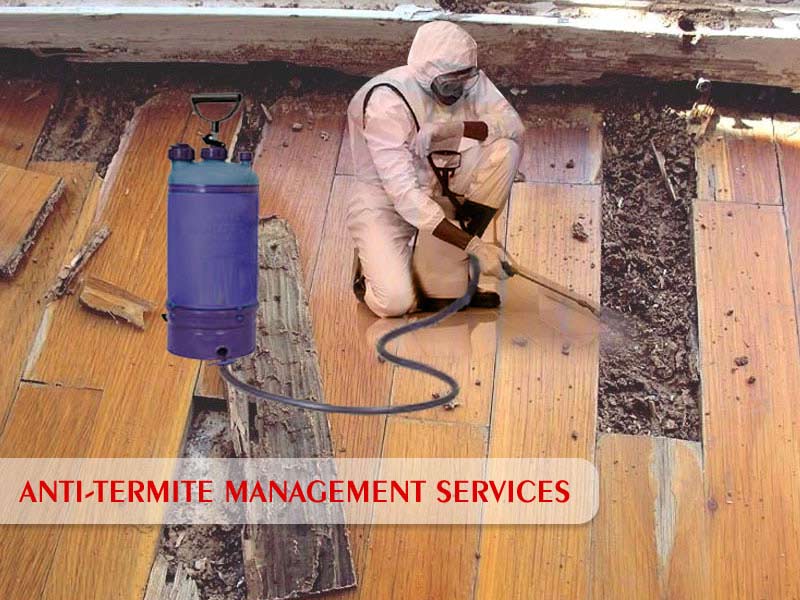Termite treatment in Hyderabad

Termite Treatment
Introduction
Termites can be a homeowner’s worst nightmare. These tiny creatures can cause extensive damage to your property, leading to costly repairs. To protect your home from termites, it’s crucial to understand the importance of termite treatment. In this article, we will explore the various aspects of termite treatment and provide you with valuable insights to safeguard your home from these destructive pests.
Why Termite Treatment is Essential
1. Prevention and Early Detection
One of the primary reasons for investing in termite treatment is prevention and early detection. Termites often go unnoticed until significant damage has already been done. By implementing termite treatment measures, you are taking proactive steps to prevent infestations before they occur.
When left untreated, termites can quickly multiply and establish colonies within the wooden structures of your home. These colonies can remain hidden for extended periods, making it difficult to detect the infestation until visible signs of damage emerge. Regular termite treatments can help identify potential problem areas and address them before it’s too late.
2. Protecting Your Home’s Structural Integrity
Termites are relentless when it comes to devouring the wooden components of your home. From the foundation to the attic, no part of your property is safe from their voracious appetite. Without proper termite treatment, these pests can weaken the structural integrity of your home and compromise its safety.
When termites infest wooden structures, they hollow them out, causing them to become weak and prone to collapse. This not only affects the aesthetic appeal of your home but also puts the safety of your loved ones at risk. Termite treatments act as a protective shield for your property, ensuring that the structural integrity remains intact for years to come.
3. Financial Savings
While termite treatment may seem like an additional expense, it can actually save you a substantial amount of money in the long run. The cost of repairing termite damage can be exorbitant, especially if the infestation has spread extensively. By investing in termite treatment, you are taking a proactive approach to avoid costly repairs and potential property devaluation.
Moreover, most insurance policies do not cover termite damage, making it even more crucial to prioritize termite treatment. By allocating a fraction of your budget towards termite prevention measures, you can potentially save yourself from financial distress in the future.
Different Types of Termite Treatment
1. Liquid Termiticides
Liquid termiticides are an effective and commonly used method for termite treatment. This treatment involves creating a chemical barrier around your property, deterring termites from entering or infesting your home. The liquid termiticide is usually applied to the soil, foundation, and the perimeter of your house, providing long-lasting protection against these destructive pests.
2. Termite Baits
Termite baits are an alternative approach to liquid termiticides. This treatment involves strategically placing bait stations around your property, which are designed to attract termites. Once the termites feed on the bait, they carry the toxic substance back to their colony, effectively eliminating the entire termite population. Termite baits are a more environmentally friendly option and are particularly useful in areas where the soil treatment is not feasible.
3. Wood Treatment
Wood treatment involves applying chemical solutions directly to wooden components to protect them against termite infestations. This treatment is commonly used during construction, where chemicals are injected into the wood to create a protective barrier. Wood treatment can also be applied to existing structures as a preventive measure or as a part of termite eradication procedures.
Signs of Termite Infestation
Recognizing signs of termite infestation is crucial for timely action. Here are some indicators to watch out for:
- Mud Tubes: Termites construct mud tubes to travel safely between their colony and food sources. These tubes can usually be found along the foundation or on walls.
- Discarded Wings: Swarmers, a type of termite, shed their wings after finding a suitable location to establish a new colony. Finding discarded wings in your home may suggest a nearby termite infestation.
- Hollow-sounding Wood: Tap on wooden components of your home and listen for a hollow sound. Termites often consume the interior of wood, leaving only a thin outer layer intact.
- Visible Damage: Look out for blistering or peeling paint, sagging floors, or buckling walls, as these can indicate a severe termite infestation.
If you notice any of these signs, it is crucial to consult a professional termite exterminator to assess the situation and provide appropriate treatment recommendations.
Conclusion
Protecting your home from termite infestations should be a top priority for every homeowner. Termite treatment not only prevents extensive damage but also preserves the structural integrity and value of your property. By understanding the importance of termite treatment and recognizing the signs of infestations, you can take proactive measures to safeguard your home. Whether you opt for liquid termiticides, termite baits, or wood treatment, consulting a professional exterminator will ensure that your termite treatment plan is tailored to the specific needs of your home. Take action today and secure your property from the destructive forces of termites with the help of HiLifepc.com.
